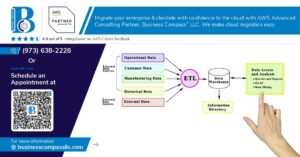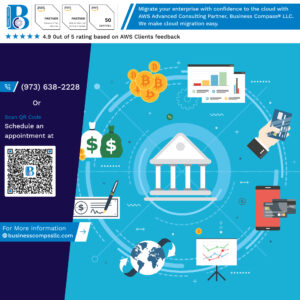Moving your business to the cloud isn’t just about following the latest tech trend—it’s about building a strategic cloud migration that actually works for your organization. Too many companies jump in without proper cloud migration planning, only to face budget overruns, security gaps, and frustrated teams.
This guide is designed for IT leaders, business executives, and technology managers who want to get their cloud migration strategy right the first time. You’ll learn how to avoid the most common cloud migration pitfalls that can derail your project and create a future-proof cloud strategy that grows with your business.
We’ll walk through how to honestly assess where you are now and choose the right cloud service models for your needs. You’ll discover the biggest mistakes companies make during enterprise cloud migration—and how to sidestep them entirely. Finally, we’ll show you how to build a realistic cloud migration roadmap that keeps your project on track while setting up your infrastructure for long-term success.
Getting cloud migration right means doing your homework upfront. Let’s make sure your move to the cloud becomes a competitive advantage, not a costly lesson.
Understanding Your Current Infrastructure and Business Goals
Assess existing technology assets and dependencies
Start by cataloging every system, application, and data source in your current environment. Document how these components connect and depend on each other – this mapping reveals critical relationships that could break during migration. Legacy systems often have hidden dependencies that aren’t immediately obvious. Create a comprehensive inventory that includes hardware specifications, software versions, licensing agreements, and integration points. Pay special attention to databases, middleware, and custom applications that might require specialized migration approaches.
Define clear migration objectives and success metrics
Successful cloud migration strategy requires measurable goals beyond simply “moving to the cloud.” Define specific business outcomes like cost reduction percentages, performance improvements, or scalability targets. Establish baseline metrics for current system performance, availability, and costs before migration begins. Set realistic expectations for ROI timelines and operational improvements. Your success metrics should align with broader business objectives, whether that’s accelerating time-to-market, improving disaster recovery capabilities, or enabling remote workforce flexibility.
Identify compliance and regulatory requirements
Different industries face varying compliance obligations that directly impact cloud migration planning. Healthcare organizations must consider HIPAA requirements, financial services need SOX compliance, and government contractors face specific security clearance needs. Research your cloud provider’s certifications and ensure they meet your regulatory standards. Some data types might be restricted from certain geographic regions or require specific encryption methods. Document these requirements early to avoid costly redesigns later in your migration process.
Evaluate budget constraints and timeline expectations
Strategic cloud migration requires honest assessment of available resources and realistic timeline planning. Factor in not just migration costs but ongoing operational expenses, training needs, and potential downtime impacts. Cloud costs can vary significantly based on usage patterns and service selections. Consider both immediate migration expenses and long-term operational costs when building your budget. Align your timeline with business cycles to minimize disruption during critical periods. Remember that rushed migrations often lead to higher costs and increased risk of encountering common cloud migration pitfalls.
Choosing the Right Cloud Strategy and Service Model
Compare public, private, and hybrid cloud options
Public clouds offer cost-effective scalability and rapid deployment, making them perfect for variable workloads and startups. Major providers like AWS, Azure, and Google Cloud handle infrastructure management while you focus on applications. Private clouds deliver enhanced security and control, ideal for regulated industries handling sensitive data. They require significant upfront investment but provide predictable performance. Hybrid cloud strategies combine both approaches, allowing organizations to keep critical workloads on-premises while leveraging public cloud for burst capacity and development environments.
Select appropriate infrastructure, platform, or software services
Your cloud service model selection directly impacts operational complexity and costs. Infrastructure as a Service (IaaS) gives maximum control over virtual machines and networking but requires substantial management overhead. Platform as a Service (PaaS) accelerates development by providing pre-configured environments, databases, and middleware without server management headaches. Software as a Service (SaaS) eliminates maintenance entirely, delivering ready-to-use applications. Smart organizations match service models to specific use cases rather than adopting one-size-fits-all approaches for their strategic cloud migration.
Determine optimal workload distribution across environments
Effective workload placement requires analyzing performance requirements, data sensitivity, and compliance needs. Customer-facing applications benefit from public cloud’s global reach and auto-scaling capabilities. Financial systems and proprietary algorithms often stay in private environments for security reasons. Development and testing workloads typically migrate first to public cloud due to lower risk and immediate cost savings. Create a workload assessment matrix considering latency requirements, data gravity, integration complexity, and regulatory constraints. This cloud migration strategy ensures each application lands in its optimal environment while maintaining seamless connectivity across your distributed infrastructure.
Common Migration Pitfalls That Derail Projects
Underestimating complexity and interdependencies
Organizations often view cloud migration as a simple lift-and-shift operation, overlooking the intricate web of dependencies between applications, databases, and systems. Legacy applications may rely on specific network configurations, shared storage, or custom middleware that don’t translate directly to cloud environments. What appears as a straightforward migration can quickly become a complex puzzle where moving one piece affects dozens of others, leading to unexpected downtime and performance issues.
Inadequate security planning and data protection
Security frameworks that work in on-premises environments require complete reimagining for cloud migration pitfalls scenarios. Many companies fail to address shared responsibility models, leaving gaps in data encryption, access controls, and compliance requirements. Without proper identity and access management planning, sensitive data becomes vulnerable during transit and storage. Regulatory compliance issues often surface late in the process, forcing costly redesigns and potentially halting entire migration timelines.
Poor change management and staff resistance
Technical teams comfortable with existing infrastructure often resist cloud migration strategy initiatives, viewing them as threats to job security or expertise. Without proper training and communication, employees may inadvertently sabotage migration efforts through passive resistance or fear-driven mistakes. Organizations that skip comprehensive change management programs face higher failure rates, extended timelines, and decreased team morale that persists long after migration completion.
Insufficient testing and rollback procedures
Rushing to production without thorough testing in cloud environments creates catastrophic risks for enterprise cloud migration projects. Many organizations underestimate the differences between cloud and on-premises performance characteristics, leading to applications that fail under real-world loads. Without well-defined rollback procedures and tested disaster recovery plans, companies find themselves trapped in partially migrated states with no clear path forward or backward when problems arise.
Overlooking hidden costs and ongoing expenses
Cloud migration planning often focuses solely on obvious infrastructure costs while ignoring data transfer fees, storage charges, and premium support requirements. Network egress costs can quickly spiral out of control, especially for data-intensive applications. Ongoing operational expenses like monitoring tools, security services, and specialized cloud expertise frequently exceed initial budget projections, creating financial strain that undermines the entire strategic cloud migration business case.
Building Your Migration Roadmap and Timeline
Prioritize applications based on business impact and complexity
Start your cloud migration roadmap by ranking applications through a business impact matrix. Critical revenue-generating systems and customer-facing applications take priority, while legacy systems with minimal business value move to the bottom. Assess technical complexity alongside business importance – simple applications with high impact make perfect candidates for early migration wins. Document dependencies between applications to avoid disrupting interconnected systems. Consider compliance requirements, data sensitivity, and performance needs when setting priorities. This structured approach ensures your cloud migration strategy delivers maximum business value while minimizing operational risk during the transition process.
Create phased migration approach with clear milestones
Break your migration into digestible phases spanning 6-18 months each, depending on your organization’s size and complexity. Phase one typically includes proof-of-concept projects and low-risk applications to build team confidence and refine processes. Subsequent phases tackle more complex systems while applying lessons learned from earlier migrations. Set specific, measurable milestones for each phase – completed application migrations, achieved performance benchmarks, and realized cost savings. Build buffer time into your cloud migration planning to accommodate unexpected challenges. Regular milestone reviews keep stakeholders informed and allow for course corrections without derailing the entire project timeline.
Establish governance frameworks and decision-making processes
Create a cloud center of excellence with representatives from IT, security, finance, and business units to oversee migration decisions. Define clear escalation paths for resolving technical conflicts and budget approvals. Establish standardized processes for application assessment, cloud provider selection, and post-migration validation. Document decision criteria for choosing between different cloud service models and migration approaches. Regular governance meetings ensure alignment with business objectives and maintain momentum throughout the migration journey. Strong governance prevents scope creep and keeps your enterprise cloud migration focused on strategic goals rather than tactical convenience.
Ensuring Long-Term Success and Scalability
Implement robust monitoring and optimization practices
Continuous monitoring transforms cloud migration from a one-time project into an ongoing optimization journey. Deploy comprehensive monitoring tools that track performance metrics, cost patterns, and security vulnerabilities across all cloud resources. Set up automated alerts for unusual spending spikes, performance degradation, or security threats. Regular optimization reviews help identify underutilized resources, right-size instances, and eliminate unnecessary services. Cloud-native monitoring solutions provide real-time visibility into application performance, user experience, and infrastructure health. Establish baseline performance metrics during migration and continuously benchmark against them. Cost optimization becomes easier with detailed usage analytics and automated resource scaling. Performance tuning requires regular analysis of application bottlenecks, network latency, and storage efficiency. Security monitoring should include compliance tracking, access pattern analysis, and threat detection. Weekly optimization sprints help teams address performance issues quickly and maintain optimal resource allocation throughout the cloud journey.
Plan for future technology evolution and business growth
Future-proof cloud strategy demands flexibility and scalability built into your architecture from day one. Design cloud infrastructure with horizontal scaling capabilities that accommodate rapid business expansion without major architectural overhauls. Choose cloud services that support emerging technologies like artificial intelligence, machine learning, and IoT integration. Multi-cloud approaches provide flexibility to adopt best-of-breed services as technology landscapes evolve. Container-based architectures enable seamless application portability across different cloud platforms and on-premises environments. API-first design patterns ensure applications can integrate with future systems and services. Regular technology assessments help identify opportunities to leverage new cloud capabilities for competitive advantage. Build modular, loosely-coupled systems that allow individual components to evolve independently. Plan capacity requirements based on projected growth patterns and seasonal demand fluctuations. Cloud-native development practices enable faster deployment of new features and easier adoption of emerging technologies.
Develop cloud-native capabilities and skills
Successful cloud migration requires building organizational expertise in cloud-native technologies and operational practices. Invest in comprehensive training programs that cover cloud architecture, DevOps practices, and security frameworks. Cross-functional teams benefit from shared knowledge of cloud services, automation tools, and monitoring platforms. Hands-on workshops and certification programs accelerate skill development and build confidence in cloud technologies. Partner with cloud providers for specialized training on platform-specific services and best practices. Internal knowledge sharing sessions help distribute expertise across teams and departments. Create centers of excellence that establish standards, share learnings, and guide cloud adoption efforts. Mentorship programs pair experienced cloud professionals with team members learning new skills. Regular hackathons and innovation sessions encourage experimentation with new cloud services and technologies. Document lessons learned and best practices to build institutional knowledge that survives personnel changes.
Create disaster recovery and business continuity plans
Comprehensive disaster recovery planning protects business operations against service disruptions, data loss, and security incidents. Multi-region deployment strategies ensure applications remain available even during regional cloud outages. Automated backup systems should capture both data and configuration settings with regular testing of restore procedures. Recovery time objectives (RTO) and recovery point objectives (RPO) guide infrastructure design decisions and backup frequency. Disaster recovery testing scenarios should simulate various failure modes including data center outages, security breaches, and network disruptions. Business continuity plans define roles, responsibilities, and communication protocols during emergency situations. Geographic distribution of critical systems reduces risk from localized disasters or service interruptions. Regular disaster recovery drills validate procedures and identify gaps in recovery capabilities. Cloud-native backup solutions provide faster recovery times and better integration with existing cloud services. Documentation and runbooks ensure recovery procedures remain current and accessible during crisis situations.
Cloud migration doesn’t have to be a painful experience that leaves your team scrambling to fix problems after the fact. When you take time to understand what you’re working with, pick the right approach for your specific needs, and create a solid plan, you set yourself up for success. The companies that struggle are usually the ones who rush in without doing their homework or try to move everything at once without thinking about the bigger picture.
The real secret is treating migration as a journey, not a one-time event. Your cloud strategy needs to grow with your business, and that means building flexibility into your plans from day one. Start with a clear roadmap, learn from each phase, and don’t be afraid to adjust course when you discover something isn’t working. With the right preparation and mindset, cloud migration becomes less about surviving the transition and more about unlocking new opportunities for your business to thrive.




















